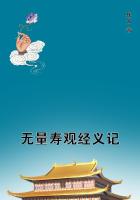But while the death of vegetation appears to have been represented in all, and its revival in some, of these spring and midsummer ceremonies, there are features in some of them which can hardly be explained on this hypothesis alone. The solemn funeral, the lamentations, and the mourning attire, which often characterise these rites, are indeed appropriate at the death of the beneficent spirit of vegetation. But what shall we say of the glee with which the effigy is often carried out, of the sticks and stones with which it is assailed, and the taunts and curses which are hurled at it? What shall we say of the dread of the effigy evinced by the haste with which the bearers scamper home as soon as they have thrown it away, and by the belief that some one must soon die in any house into which it has looked? This dread might perhaps be explained by a belief that there is a certain infectiousness in the dead spirit of vegetation which renders its approach dangerous. But this explanation, besides being rather strained, does not cover the rejoicings which often attend the carrying out of Death. We must therefore recognise two distinct and seemingly opposite features in these ceremonies: on the one hand, sorrow for the death, and affection and respect for the dead; on the other hand, fear and hatred of the dead, and rejoicings at his death. How the former of these features is to be explained I have attempted to show: how the latter came to be so closely associated with the former is a question which I shall try to answer in the sequel.
8. Analogous Rites in India.
IN THE KANAGRA district of India there is a custom observed by young girls in spring which closely resembles some of the European spring ceremonies just described. It is called the Ral? Ka mela, or fair of Ral?, the Ral? being a small painted earthen image of Siva or Parvat?. The custom is in vogue all over the Kanagra district, and its celebration, which is entirely confined to young girls, lasts through most of Chet (March-April) up to the Sankrant of Baisakh (April). On a morning in March all the young girls of the village take small baskets of d?b grass and flowers to an appointed place, where they throw them in a heap. Round this heap they stand in a circle and sing. This goes on every day for ten days, till the heap of grass and flowers has reached a fair height. Then they cut in the jungle two branches, each with three prongs at one end, and place them, prongs downwards, over the heap of flowers, so as to make two tripods or pyramids. On the single uppermost points of these branches they get an image-maker to construct two clay images, one to represent Siva, and the other Parvat?. The girls then divide themselves into two parties, one for Siva and one for Parvat?, and marry the images in the usual way, leaving out no part of the ceremony. After the marriage they have a feast, the cost of which is defrayed by contributions solicited from their parents. Then at the next Sankrant (Baisakh) they all go together to the river-side, throw the images into a deep pool, and weep over the place, as though they were performing funeral obsequies. The boys of the neighbourhood often tease them by diving after the images, bringing them up, and waving them about while the girls are crying over them. The object of the fair is said to be to secure a good husband.
That in this Indian ceremony the deities Siva and Parvat? are conceived as spirits of vegetation seems to be proved by the placing of their images on branches over a heap of grass and flowers. Here, as often in European folk-custom, the divinities of vegetation are represented in duplicate, by plants and by puppets. The marriage of these Indian deities in spring corresponds to the European ceremonies in which the marriage of the vernal spirits of vegetation is represented by the King and Queen of May, the May Bride, Bridegroom of the May, and so forth. The throwing of the images into the water, and the mourning for them, are the equivalents of the European customs of throwing the dead spirit of vegetation under the name of Death, Yarilo, Kostroma, and the rest, into the water and lamenting over it. Again, in India, as often in Europe, the rite is performed exclusively by females.
The notion that the ceremony helps to procure husbands for the girls can be explained by the quickening and fertilising influence which the spirit of vegetation is believed to exert upon the life of man as well as of plants.
9. The Magic Spring.















